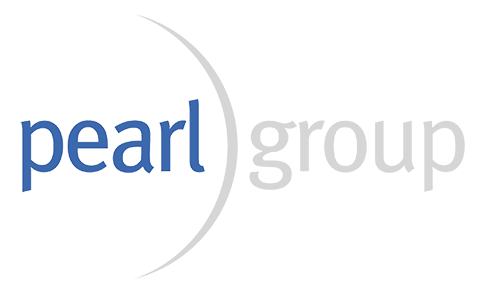Christmas Closure Dates - Ronan's Laboratory
Ronan’s Dental Laboratory
Close at 4pm 18th December 2020 and re-open at 8am on 11th January 2021
We will have an Emergency Repair Service
with one Staff Member on site at each location on the
21st and 22nd of December 2020 and the 6th ,7th and 8th January 2021
Christmas Closure Dates - Smile Corporation
Smile Corporation
Last day for new cases received to be finished before Christmas are as follows:
Last day for SmileTRU Monday 2nd December 2019*
Last day for Chrome is Thursday 5th December 2019*
Last day for Crown & Bridge is Wednesday 11th December 2019*
Last day for New Prosthetic Cases is Wednesday 11th December 2019*
Last day for Repairs & Relines Thursday 19th December 2019*
Last day for Orthodontics is Wednesday 18th December 2019*
*Or as arranged with the Laboratory
Last day Friday 20th December 2019 @ 5:00pm.
Closed 20th December 2019 @ 5:00pm to 06thJanuary 2020 @ 8:30am.
Orthodontics to resume Monday 6th January 2020
SmileTRU to resume Monday 13th January 2020
Chrome to resume Monday 13th January 2020
Prosthetics to resume Monday 6th January 2020
Crown & Bridge to resume Monday 6th January 2020
Christmas Closure Dates - Pearl Dental SA
Pearl Dental SA
Close at 4pm 18th December 2020 and re-open at 8am on 11th January 2021
We will have an Emergency Repair Service
with one Staff Member on site at each location on the
21st and 22nd of December 2020 and the 6th ,7th and 8th January 2021
Seminars - Backup
Nothing Found
It seems we can’t find what you’re looking for. Perhaps searching can help.
IAS Inman Aligner Certification Course, Melbourne
Date: 02/06/2016
Location: Crown Melbourne, Level 1, Crown Towers 8 Whiteman Street Southbank, Melbourne, Victoria, Australia
Price: AUD$1,195.00 + GST
IAS Inman Aligner Advanced Course, Melbourne
Date: 03/06/2016
Location: Crown Melbourne, Level 1, Crown Towers 8 Whiteman Street Southbank, Melbourne, Victoria, Australia
Price: AUD$1,350.00 + GST
IAS Inman Aligner Certification Course, Perth
Date: 04/08/2016
Location: Fraser Suites Perth, 10 Adelaide Terrace, Perth, Western Australia, Australia, 6004
Price: AUD$1,195.00 + GST
IAS Inman Aligner Advanced Course, Perth
Date: 05/08/2016
Location: Fraser Suites Perth, 10 Adelaide Terrace, Perth, Western Australia, Australia, 6004
Price: AUD$1,350.00 + GST
IAS Inman Aligner Certification Course, New Zealand
Date: 29/09/2016
Location: SKYCITY Auckland Convention Centre, 88 Federal Street, Auckland, Auckland, New Zealand, 1010
Price: AUD$1,195.00 + GST
IAS Inman Aligner Advanced Course, New Zealand
Date: 30/09/2016
Location: SKYCITY Auckland Convention Centre, 88 Federal Street, Auckland, Auckland, New Zealand, 1010
Price: AUD$1,350.00 + GST
Partial Flex
An excellent material for interim prosthesis and a perfect prosthesis for patients who are interested in an economic solution without surgery.
- an excellent material for interim prosthesis.
- a perfect prosthesis for patients who are interested in a economic solution without surgery.
- hypoallergenic and thus perfect for all patients.
- a muco-dento based prosthesis already accepted by thousands of users.
Indications:
- Toothless space over 7 mm. mesiodistal, cervical, incisal.
- Bone spicules must have been extracted no periodontal problems healthy tooth stumps.
Possible Applications:
PARTIAL FLEX® BILATERAL PROSTHESIS
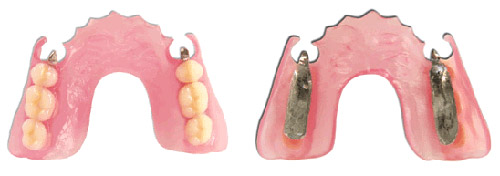
PARTIAL FLEX® BILATERAL PROSTHESIS COMBINED WITH METAL

PARTIAL FLEX® FULL PROSTHESIS

OCCLUSAL GUARDS
- Biocompatible *
- long life term
- unbreakable
- does not wear
* Studies made by Toxikon in Germany.

For further information about Partial Flex, contact Pearl Dental SA on 08 8362 7433 or wingate@pearlhealthcare.com.au
Ronan's Dental Laboratory
Services provided by Ronan's Dental Laboratory
- LAVA – Scan/Design
- Procera – Scan/Design
- EMAX – Scan/Design or Pressed
- In-house shade taking
- All popular implants
- Reline and repairs (fast reliable service)
- Removable partial dentures
- Temporary dentures
- Monomer-free flexible dentures
- Mouthguards and splints
- Fully insured INTACT™ Mouthguards
- Full palates
- Strengtheners
- Removable partial dentures
- Precision attachments
- In-house retainers
- In-house space maintainers
We are supported by the largest and most experienced Orthodontic Laboratory in Australia, SML (Space Maintainers Laboratories)
- Tap 3
- MDSA
Smile Corporation
Services provided by Smile Corporation
- Arch Development Appliances
- Functional Orthopedic Appliances
- Trampoline Appliance Range
- Paediatric Appliance Range
- Habit Appliances
- Fixed Appliances
- ALF(Advanced Lightwire Functional) Appliances
- Space Maintainers & Regainers
- Fixed & Removable Retainers
- Indirect Set Ups
- Bleaching Trays
- INTACT™ Mouthguards
Smile is also the Australian exclusive licensee for Space Maintainers
Exclusively Licensed Laboratory Australia & New Zealand
- Inman Aligner™
- SmileTRU Clear Positioner System
- Perio Protect®
Contact Lab to Discuss
- TAP® System™ Custom Range of Products;
- Tap® 3
- Tap® 3 Elite
- Dream Tap (Brand NEW)
- MDSA Snoring Device
- Dorsal Appliances
- Silencer
- Full Breath Solution
- UCLA Adjustable Modified Herbst™
- Talon™ Splint
- Astron Clear Splint
- Myo Clenching Inhibitor – MCI
- Posterior Pivots
- Michigan Hard Acrylic Splint
- Mora/Gelb Appliance
- Soft Bruxism Splint
- 3D Printed Models
- Orthodontic Study Models
- Metal Ceramics
- Metal Free Ceramics
- e Max™ – Cad Design
- e Max™- Pressed
- 3M ESPE Lava™
- Monolithic Zirconia
- Implants
- Diagnostic Wax Ups
- Customised Shade Taking
- Full Acrylic Dentures
- Partial Dentures
- Relines
- Repairs & Additions
- Flexible Dentures
- Chrome Castings
SML Global
SML encompasses the design, construction and adjustment of orthodontic and orthopedic appliances: removable and fixed appliances; retainers; snoring and OSA appliances; bruxism and TMD splints; mouth guards, treatment partials, study models and digital imaging services…and more.
Appliance therapy is a simple, effective, available way for dental professionals to address the full range of patient needs – to grow a practice, dramatically expand professional scope, and to take the lead in embracing the technology and techniques that are literally shaping the future of modern dental and orthodontic treatment.
We partner with the dental practitioner to create new treatment opportunities, explore new ways to expand a practice (without the necessity of adding new patients, staff or equipment), and fabricate appliances to address the restorative, preventive and cosmetic needs of a patient base. In short, SML provides access to everything a practice needs to ensure success – from appliances and appliance therapy to products and supplies to diagnostics and in-depth treatment consultation.
Pearl Healthcare provides a full suite of SML Global products, including:
Narval™ CC is a CAD/CAM custom-made mandibular repositioning device (MRD) — ideal for patients with mild-to-moderate obstructive sleep apnea (OSA) and those unable to comply with continuous positive airway pressure (CPAP) treatment. It is also a first line treatment for snoring in the absence of OSA. Unique CAD/CAM technology ensures a high degree of customization for individual patients –precise fit, comfortable retention, and optimal results. Patented physiological articulation ensures maximum proximity to the occlusal plane and strong, flexible connecting rods are easy to change, permitting simple titration and adjustment in a 15mm protrusive range (-1mm increments) as treatment progresses.
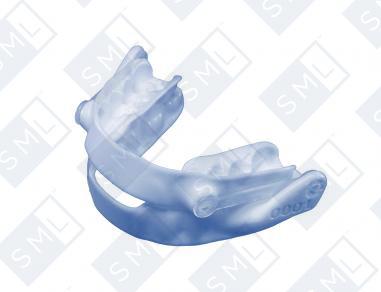
A dentist-created, FDA-cleared medical home-care treatment program designed to eliminate gum disease at the source – without pain, without surgery, without any unnecessary or repetitive invasive procedures.

An alternative to a micro-screw for moving a tooth labially. With proper positioning and adjustment, this spring can also be used to correct minor rotations. To activate springs, simply pull forward on the spring’s arm with 139 Bird-Beak Pliers. Typically, if the lingual surface of the tooth to be moved is quite vertical, the acrylic is left over the top of the finger spring. However, if the lingual incline is rather shallow, it is suggested that a composite ledge be placed on the tooth’s lingual. A composite ledge will prevent the activated finger spring from riding up the lingual incline of the central — and greatly improve its effectiveness. SML recommends that the acrylic be cleared away from the top of the spring. This makes it easier for the dentist to adjust the spring and easier for the patient to properly insert the activated appliance. Upon insertion, the patient needs to be certain that the spring arm “snaps” gingival to the composite ledge. Note: If any of the teeth are locked in lingual cross bite, it may prove necessary to open the bite with an anterior or posterior bite plane.

Whether you are active in orthodontics or not, every dentist at one time or another has had to replace a patient’s retainer…and while there are many different appliance designs and variations, the Maxillary Final Retainer is the basic retaining appliance. It features Adams Clasps on the first molars and a standard, tightly adapted “Hawley”-type labial arch wire running from the distal of both cuspids. The acrylic should be well adapted to the palate and the lingual aspect of the teeth. Every effort should also be made to keep it thin for comfort. Note: For fabrication of this appliance, always send the lab both upper and lower casts – along with a bite relationship.

Although it often takes numerous appointments to get a hard splint to be comfortable, a soft splint is usually not an acceptable alternative because it cannot be adjusted at all. By choosing a Talon™ splint you can combine the best features of a hard splint and a soft splint while eliminating the inherent disadvantages of either type. The portion of the appliance that covers the buccal, labial, and lingual surfaces is made of a soft, thermoplastic, resilient polymer. At body temperature this material is flexible, but firm. It provides superior retention without creating any forces that can cause the teeth or tissues to become sore. Using this material should also eliminate the need for any internal adjustments. The occlusal surface of the appliance is made of hard acrylic that is chemically bonded to the thermoplastic material. Having a hard acrylic occlusal surface allows the splint to be adjusted as needed. The Talon™ appliance design can be utilized for all splint techniques (i.e., Gelb, MORA, May, etc.).
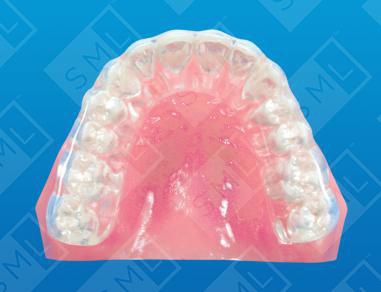
Palate-Free Temp Removable Partial Denture
This appliance was originally designed as a removable interim implant site protector for patients who could not tolerate a removable partial denture. Its double clasps and rest seats are designed to give extra retention and tissue protection. But because one of the clasps is often on the cuspid, esthetics can be an issue. Therefore selecting patients with a low lip line when they smile is preferable when choosing this appliance. Fabrication requires both upper and lower casts, an interocclusal record, and a tooth shade. Note – Don’t forget to adjust the internal aspect of the pontics to make sure they do not put any unwanted pressure on the surgical site.
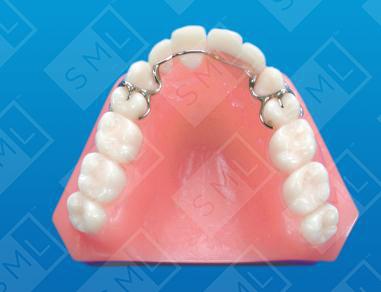
Elastic Halterman Appliance U/L
This design is indicated when the erupting six-year molar is caught under the distal edge of a primary second molar. A mushroom-shaped button is bonded to the occlusal surface of the erupting molar. A band with a hook that extends distal to the molar is cemented to the primary second molar. Chain elastic is used between the hook and the button to provide the distal force needed to move the six-year molar.

Early loss of a primary molar often allows the adult first molar to tip and move mesially. The basic unilateral Space Maintainer is used for holding molar position.

The Lingual Arch is considered the “appliance of choice” to maintain arch length even when the space to be maintained is unilateral. This simple retainer prevents both mesial and lingual tipping of the molars while maintaining the arch length. The most common design is composed of an arch wire soldered to two bands. When prescribing this appliance, please indicate clearly if you have a wire placement preference on the lingual of the anterior teeth.
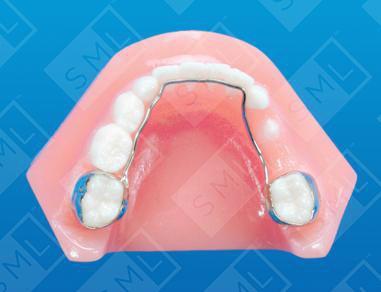
The Nance appliance is designed to prevent arch length loss by maintaining the position of the maxillary molars. To accomplish this, it uses an acrylic button in the pre-maxillary region of the palate to add stability. This design is also frequently used during full banding and bracketing to create an anchorage unit.

Groper Fixed Anterior Bridge U/L
Esthetics and strength are the key advantages to this popular design. The Groper Fixed Anterior Bridge is made extra strong by attaching each tooth separately to a specially designed, stainless steel pad (an SML exclusive). Each unit is then welded and soldered to the arch wire. Placing rest seats and bonding rests into place will prevent the patient from bending or breaking the appliance. Note: As with all bridges and partials, opposing models and a bite registration are necessary for proper construction.
NOTE: Replacement teeth are made of ACRYLIC by default. The replacement teeth are also available in COMPOSITE when requested. Composite pedo partials incur an additional fee. Composite material allows the practitioner to add, reduce or repair the device easier than the standard acrylic. Keep in mind that BOTH the acrylic and composite material may discolor over time based upon a number of factors (Diet and life style etc.)

Fixed Tongue Loops may be used to control the effects of tongue thrusting or to prevent a patient from thumb sucking. This interference is often enough to allow the facial muscles to act upon the anteriors and return them to their normal position. Myofunctional therapy is initiated by adding a spinner. If more aggressive treatment is needed, simply cut off the apex of the loops and straighten the wires to create a modified Hay Rake.

Providing superior fit, retention and comfort, the SML™ Dorsal utilizes precision-milled upper and lower occlusal splints to open the vertical relationship while holding the mandible in the desired forward position. Interlocking buccal inclines allow a desirable degree of mandibular lateral movement, thus alleviating muscle trismus. The inclines, while keeping the mandible from dropping open during sleep, enable the patient to open and close normally while wearing the appliance. Suitable for all dentitions, the SML™ Dorsal is ideal for patients with existing crown and/or bridge work.
IMPORTANT: Construction bite should be taken with mandible 65%-75% advanced with 4mm interincisal opening.

Keeps the airway open by holding the jaw and tongue in a comfortable forward position while triggering a slight tightening of the soft tissues and muscles of the upper airway, especially the soft palate. FDA-cleared for Snoring and OSA, the Sleep Well Appliance is ideal for use in bruxing cases. It allows up to 9mm of AP advancement and maintains constant protrusiveness via the patented Protrusive Element (PE) inserts. Simple, non-threatening design and easy-to-clean, easy-to-adjust convenience yield high patient compliance.
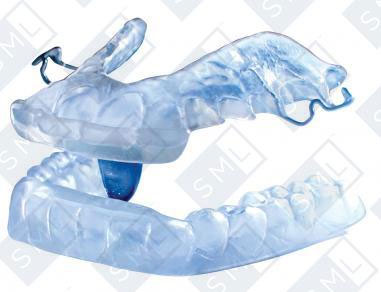
UCLA Adjustable Modified HerbstTM
The Adjustable Herbst™ Appliance Recently adapted to the role of snoring/OSA appliance, The Herbst has since become one of the most commonly recommended, most often prescribed devices for the relief of snoring and obstructive sleep apnea. It consists of two sturdy, acrylic trays — one for each arch (upper and lower). The inside of the trays is formed to fit tightly over the teeth. The upper and lower trays are joined by two bars that are placed along either side. The bars allow the lower tray to be advanced forward, thus comfortably opening the airway. The Herbst is available with either thermoflex trays (pliable and more easily adjusted) or hard acrylic trays (not as easily adjusted, but more durable).

The TAP 3 Elite is the latest innovation in the TAP line of oral appliances. It has a simple design that attaches the upper and lower trays together by using a hook and bar mechanism as can be seen in the accompanying photo. Two hooks of different lengths are provided with each appliance which allows for greater adjustability. This appliance design allows for immediate lip closure upon appliance delivery and is considered a more comfortable fit overall, thereby leading to greater patient acceptance. A Hex Key is provided with the appliance for ease of adjustment.

Narval™ CC is a CAD/CAM custom-made mandibular repositioning device (MRD) — ideal for patients with mild-to-moderate obstructive sleep apnea (OSA) and those unable to comply with continuous positive airway pressure (CPAP) treatment. It is also a first line treatment for snoring in the absence of OSA. Unique CAD/CAM technology ensures a high degree of customization for individual patients –precise fit, comfortable retention, and optimal results. Patented physiological articulation ensures maximum proximity to the occlusal plane and strong, flexible connecting rods are easy to change, permitting simple titration and adjustment in a 15mm protrusive range (-1mm increments) as treatment progresses.

Aligner Sleep Appliance (ASA)TM
Dentist-prescribed for aligner/Invisalign® therapy, the Aligner Sleep Appliance (ASA)™ is worn with the Invisialign® appliance during sleep to support the lower jaw in a mild forward position, while reducing nighttime snoring and mild-to-moderate Obstructive Sleep Apnea in adults.
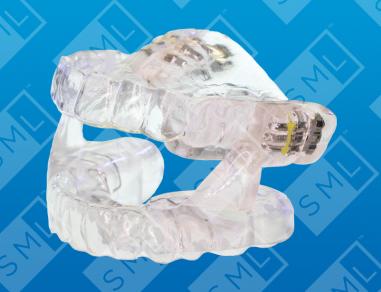
Standard Twin Block to Open Bite (Class II Division I)
The Standard Twin Block is a removable functional appliance consisting of two (twin) bite blocks (upper and lower) that are designed to interlock at 70 degrees in such a manner that the mandible is held in a more protrusive position. Over time, the repositioning of the mandible forward eliminates the overjet. When acrylic is removed from the upper block, eruption of the lower first molars occurs — thus eliminating the overbite. When treatment with the Twin Block is complete, the first molars will be in contact and the maxillary and mandibular incisors will be nicely coupled. In the mixed dentition, the lower molars will usually erupt passively. In the permanent dentition, the lower molars often need to be erupted actively (with vertical elastics). To ensure that the patient does not end up with a dual bite, the appliance must be worn a minimum of 7 to 9 months. When the patient’s bite is stable, retrusion of the mandible should not be possible without causing patient discomfort. Once the first treatment phase is completed and the case is at the desired vertical and AP position, it is necessary to place a Phase 2 or “Support Appliance.”
The Standard Twin Block has an upper block that covers the second primary molar or bicuspid, first molar and second molar. The lower block covers the first primary molar and two thirds of the second primary molar. It is vital to the success of the Twin Block treatment that the lower block be held ahead of the upper block at all times. To accomplish this, the blocks must be at least 5 to 6 mm thick. If they are not, adjusting them (to allow for the eruption of the lower first molars) will destroy the interlocking effect of the two blocks. Appliance retention is also critical to the success of this appliance. If you do not have first primary molars that are going to be present for 7 to 9 months –or first bicuspids that are sufficiently erupted — it is better to choose another appliance…or delay treatment until the first bicuspids have erupted and adequate retention is available. Note: The expansion screw added to this design can be used at the same time to initiate lateral arch development.

Chan LVI Neuromuscular Orthotic L
This neuromuscular orthotic is an anatomical mandibular appliance designed to orthopedically realign the mandible to the cranium, stabilizing the temporomandibular joints in six dimensions. This relationship is determined and acquired by the use of ultra low frequency TENS. Diagnostic tests are further used to design and construct this appliance by use of accurate and objective data gathered through the use of Myotronic K6-I/K7 instrumentation using computerized mandibular scanning (CMS) and electromyography (EMG) which confirms physiologic resting musculature and mandibular trajectory in harmony with the TM Joints. A reinforcing lingual wire has been placed along with 6 interproximal ball clasps for added retention. On delivery of this appliance, detailed micro-occlusion (coronoplasty) and fine proprioceptive refinement is required with TENS to establish a simultaneous terminal contact free of any interferences at the myocentric position.

The Spahl Split Vertical Appliance is very effective at closing posterior open bites — after the mandible has been properly and thoroughly advanced by a functional appliance (such as a Bionator, an Orthopedic Corrector, the Clark Twin Block, the Levandoski Mandibular Stabilization Appliance, etc.). The Spahl Split Vertical consists of separate upper and lower devices.
The upper has a simple bite plane that is designed to hold the arches at the ideal vertical relationship. This bite plane is placed on a lingual wire attached to the first molar bands via a vertical removable bracket assembly. Because the upper is to be worn 24 hours per day, the bite plane should be kept to a minimum (to allow for comfort and ease of speech).
The lower is a wire-bodied appliance composed of an anterior bite block that covers the four lower anteriors and a pair of posterior bite blocks which cover the last molar on each side of the arch. Bonded hooks, buttons, or brackets are placed on the upper and lower cuspids, bicuspids, and first molars. When the lower appliance is in place, vertical elastics are used to initiate eruption of these teeth. By wearing this device a minimum of 12 hours a day (evenings and during sleep) eruption will occur much faster than it could through passive eruption alone.
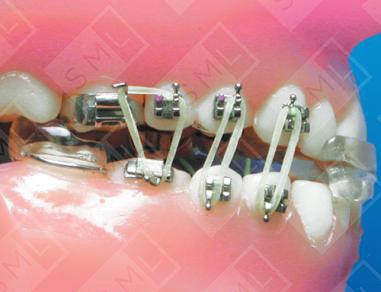
MORA/Gelb with Anatomical Occlusion L
The general design of this appliance is similar to the #6203 MORA appliance with one important difference. Through use of a Verticulator and a very precise wax construction bite that alters the patient’s mandibular position, the occlusal surface is finished with a very precise anatomical cusp/fossa contour. The anatomical occlusal finish allows the patient to function normally at the new position. This device is to be worn at all times, even while eating. If desired, the anteriors can also be covered with acrylic.

Keeps the airway open by holding the jaw and tongue in a comfortable forward position while triggering a slight tightening of the soft tissues and muscles of the upper airway, especially the soft palate. FDA-cleared for Snoring and OSA, the Sleep Well Appliance is ideal for use in bruxing cases. It allows up to 9mm of AP advancement and maintains constant protrusiveness via the patented Protrusive Element (PE) inserts. Simple, non-threatening design and easy-to-clean, easy-to-adjust convenience yield high patient compliance.
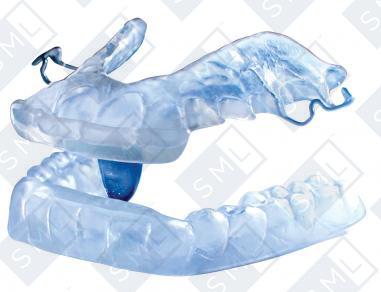
Narval™ CC is a CAD/CAM custom-made mandibular repositioning device (MRD) — ideal for patients with mild-to-moderate obstructive sleep apnea (OSA) and those unable to comply with continuous positive airway pressure (CPAP) treatment. It is also a first line treatment for snoring in the absence of OSA. Unique CAD/CAM technology ensures a high degree of customization for individual patients –precise fit, comfortable retention, and optimal results. Patented physiological articulation ensures maximum proximity to the occlusal plane and strong, flexible connecting rods are easy to change, permitting simple titration and adjustment in a 15mm protrusive range (-1mm increments) as treatment progresses.

SmileTRU
SmileTRU is a clear practitioner system that goes far beyond conventional braces in comfort and convenience for both the patient and the practitioner.
The SmileTRU Orthodontic Appliance is comprised of a series of clear positioners that are capable of moving a tooth up to .3mm and up to 2 degrees in angulation and/or torque.
The space required to obtain the desired position of the teeth may be obtained by interproximal stripping (IPR), or by pre-treating the case with arch developing appliances such as the ALF appliance or the RN-Sagittal appliance.


SmileTRU is based on the latest CAD-CAM Technology to allow for precise tooth movement.
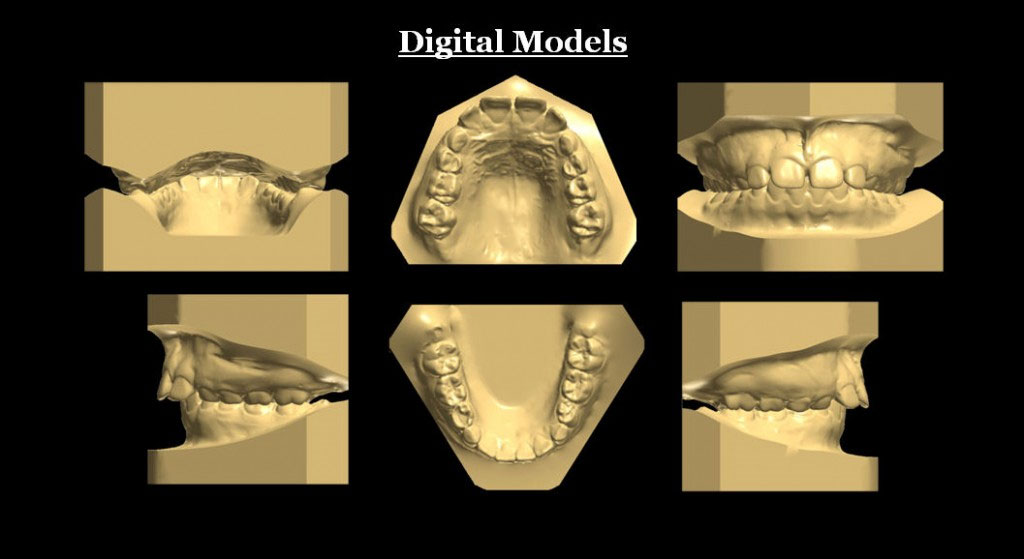
THERE ARE 4 LEVELS OF SMILETRU CASES:
Level 1 – Reset of Anterior Teeth Only
(6 trays per arch. Cosmetic alignment without disturbing the posterior occlusion)
Level 2 – Reset of Premolar to Premolar Only
(12 trays per arch)
Level 3 – Reset Full Maxillary and Mandibular Arch
(18 trays per arch)
Level 4 – PreTreatment Appliances (ex. ALF/RN Sagital) then Reset Full Maxillary and Mandibular Arch
(18 trays per arch)
The clinician has the option of requesting SmileTRU to fabricate the positioners on a three month basis, or to fabricate the entire set of positioners required to completely treat the case. The three month option allows the clinician to assess the progress of the treatment. If “In Treatment Adjustments” are required, they can be easily made by taking new impressions saving both the clinician and the patient time and money.
If the three month fabrication option is selected, SmileTRU will automatically construct the next three months of clear positioners unless the clinician contacts the laboratory requesting an “In Treatment Adjustment”. If an “In Treatment Adjustment” is required the patient should continue to wear the last set of correctly fitting positioners as retainers. This same technique can be employed if the clinician wishes to use additional positioners for final “Aesthetic Detailing”.
Most cases are treated by changing the clear positioners every 14 days. SmileTRU will provide the clinician with the approximate number of clear positioners required to treat the individual case.
For further information about SmileTRU, contact Smile Corporation on 03 9521 0299 or smilemelb@pearlhealthcare.com.au
Inman Aligner
What is an Inman Aligner?
The Inman Aligner is a simple removable appliance used to align front teeth quickly and safely. It’s ideal as a stand alone treatment or to prealign teeth prior to further cosmetic options such as bonding or minimal veneers.

How does it work?
The Inman Aligner has Nickel Titanium coil springs that power two aligner bows that gently oppose each other, guiding the teeth into their new position. These gentle forces are active over a very large range of movement, which is why the Inman Aligner works so quickly.
The image below shows the squeeze effect of the two aligner bows on the front teeth. The inner bow pushes forwards, while the outer bow pulls back on the front teeth.

What can the Inman Aligner do?
- It aligns the front teeth (crowding, protrusion, rotations, crossbites).
- Ideal for orthodontic relapse.
- As a stand-alone treatment or combine with simple whitening and bonding.
- Pre-alignment for cosmetic cases so teeth don’t need much preparation and veneers can be super-thin.
How long is the treatment with the Inman Aligner?
Most cases are completed within 6-18 weeks.
For further information about the Inman Aligner, contact Smile Corporation on 03 9521 0299 or smilemelb@pearlhealthcare.com.au
